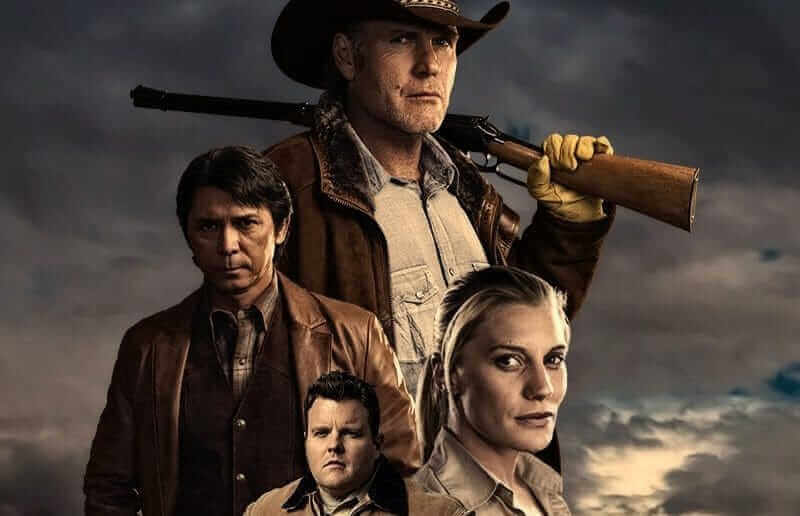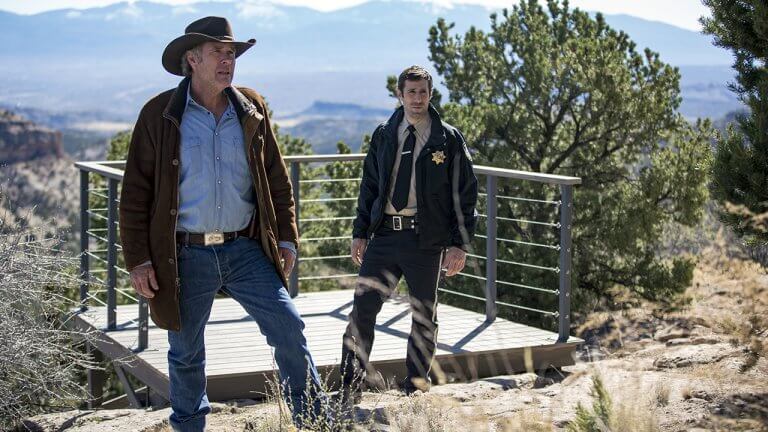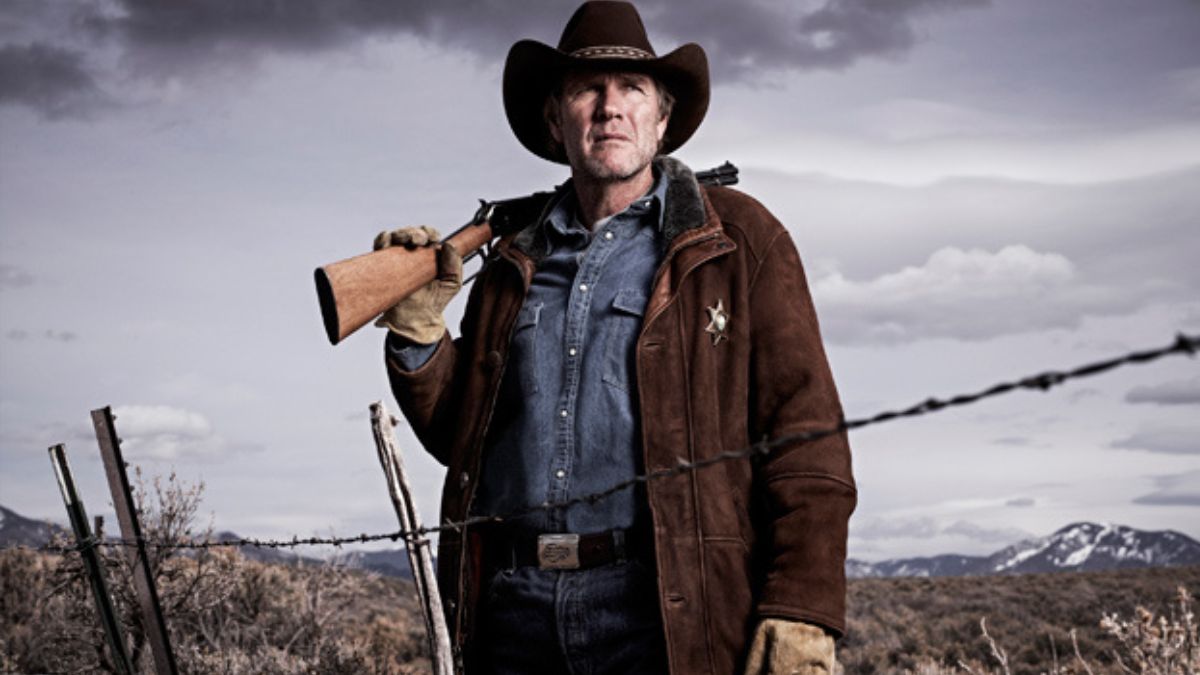Legends of the Fall II: The Long Silence (2025)
Legends of the Fall II: The Long Silence (2025) is a sweeping, elegiac continuation of one of cinema’s most hauntingly beautiful dramas. Directed by Edward Zwick — returning thirty years after his 1994 masterpiece — this long-awaited sequel revisits the Ludlow family and the Montana frontier in a story that bridges generations, wars, and the enduring cost of love and loss. Visually breathtaking and emotionally devastating,
Set in 1944, the film opens against the backdrop of World War II. Tristan Ludlow (Brad Pitt) has long since passed — killed years earlier in the wilderness he loved — but his legend still looms over the Ludlow ranch. His son, Samuel II (Austin Butler), now in his forties, runs the land with the same wild, untamable spirit that defined his father. Haunted by stories of the man he barely remembers, Samuel has become a recluse, raising horses and hiding from a world at war once again. His quiet life is shattered when his own son, Thomas (Timothée Chalamet), enlists in the army despite Samuel’s desperate pleas to stay. When Thomas is declared missing in action after a failed mission in Italy, Samuel sets off across the ocean to bring him home — dead or alive.

What follows is both a father’s odyssey and a reckoning with a century of pain. In Europe, Samuel discovers that Thomas survived — but is hiding among partisan fighters in the mountains of northern Italy, consumed by guilt and grief over the death of his comrades. The war-torn landscape mirrors the Ludlows’ Montana — beautiful yet blood-soaked, full of ghosts that refuse to fade. Their reunion is strained, marked by anger and misunderstanding, as both men struggle under the weight of a family curse: to love fiercely, to fight too long, and to lose too much.

Meanwhile, back in Montana, the Ludlow ranch faces ruin. Isabel III (Florence Pugh), the granddaughter of the original Isabel Two, now manages what remains of the family’s legacy. She receives word of Samuel’s disappearance and refuses to accept another loss. As winter descends on the ranch, she must fend off a powerful mining company threatening to buy out the valley, forcing her to embody the same quiet ferocity that once defined the Ludlows. Her storyline, alternating with Samuel’s journey abroad, anchors the film’s emotional balance — a portrait of strength in solitude, and the endurance of love across generations.
Zwick directs with the same sweeping romanticism that made the original film iconic. The cinematography by John Toll (who returns from the 1994 film) is once again transcendent — golden Montana fields, stormy skies over Europe, and candlelit interiors filled with quiet longing. James Horner’s original score is respectfully reinterpreted by Hans Zimmer, who infuses new themes of melancholy and hope, using strings and piano to evoke memory and time’s slow erosion. Every frame feels like a painting — grand in scale, intimate in emotion.

Brad Pitt appears in flashbacks and dreamlike sequences — not as a ghost, but as a memory living within Samuel’s mind. These scenes — sparse, lyrical, and heartbreaking — show a father passing on the only wisdom he ever had: that love is both the blessing and the curse of their bloodline. Samuel’s arc mirrors Tristan’s: his search for redemption is not through victory, but through understanding. The performances are raw and deeply human — Butler’s stoic intensity, Chalamet’s vulnerability, and Pugh’s strength intertwine beautifully, creating a tapestry of sorrow, resilience, and grace.
In the film’s devastating climax, Samuel and Thomas finally make it home to Montana, only to find the valley engulfed in flames from the mining company’s reckless dynamite operations. Father and son fight to save the ranch — not for land, but for memory, for family. As the fire consumes the fields, Samuel sacrifices himself to save Thomas, echoing the selflessness of his ancestors. In the closing moments, Thomas stands where his grandfather once did, the mountains behind him and the wind whispering through the grass. A familiar line returns — Tristan’s voice, distant but clear:

Legends of the Fall II: The Long Silence (2025) closes in silence — the kind that follows thunder — as the camera pulls back over the smoking valley, the Ludlow house still standing, battered but alive. It’s a film about the end of eras, the persistence of memory, and the unbroken thread that binds blood and land. Grand, mournful, and achingly beautiful, it stands as a fitting continuation of a legend — one that reminds us that while the world changes, the heart of the West still beats in silence, waiting to be heard again.
Longmire – Season 7 (2025)

Longmire – Season 7 (2025) marks the long-awaited return of the beloved neo-Western crime drama, resurrecting the stoic sheriff and his world of rugged justice for one final, emotionally charged chapter. Developed once again by John Coveny and Hunt Baldwin, with Robert Taylor reprising his iconic role as Walt Longmire, the new season picks up several years after the events of Season 6 — exploring redemption, legacy, and the question of whether a man can truly leave behind the life that defined him.
The story opens in Absaroka County, Wyoming, where a decade of uneasy peace has settled over the wide plains. Walt Longmire has retired from law enforcement, living quietly on his ranch with Vic Moretti (Katee Sackhoff), now his longtime partner in both life and love. Their world is calm but not content — Vic wrestles with the ghosts of her past cases, while Walt finds himself restless, haunted by dreams of unresolved wrongs and the steady encroachment of corporate power on the Wyoming frontier. When a mysterious murder occurs on Cheyenne land — a tribal activist found dead under suspicious circumstances — Walt is drawn back into a world he thought he’d left behind.
The crime quickly reveals deeper fractures beneath the surface. Henry Standing Bear (Lou Diamond Phillips), still running The Red Pony bar and serving as a cultural bridge between communities, warns Walt that this case isn’t just another killing — it’s the spark in a powder keg. A private energy company, backed by out-of-state interests, has been drilling near sacred tribal ground, stirring tension between the Cheyenne Nation and local ranchers. As Walt investigates, he uncovers a web of corruption, cover-ups, and disappearances that lead back to powerful men who view the land — and its people — as expendable.

What follows is classic Longmire — quiet intensity punctuated by bursts of violence and moral reckoning. Walt, now slower but wiser, must confront the limits of his own code in a world that no longer believes in simple justice. Vic, now a lieutenant in the sheriff’s department, struggles to balance her loyalty to Walt with her duty to the law. Their relationship deepens into something raw and tender — two broken souls bound by loyalty and loss. Henry’s role grows profoundly spiritual this season; his story becomes one of healing, identity, and the painful cost of wisdom.
The season also brings back familiar faces: Ferg (Adam Bartley), now the sheriff of Absaroka County, finds himself torn between political pressure and the example of his mentor. Cady Longmire (Cassidy Freeman), now a prominent attorney and advocate for Native rights, fights to protect the land her father once defended with a badge. Her growing alliance with the tribal council — and her moral clash with the energy company’s legal team — puts her directly in the crosshairs of those who would destroy everything the Longmires have stood for.
Visually, the series remains as breathtaking as ever — sweeping shots of Wyoming’s mountains and valleys bathed in golden light, contrasting the serenity of nature with the brutality of human greed. The cinematography emphasizes silence and solitude: long takes of Walt riding alone across the plains, or standing beneath the wide-open sky, his weathered face framed against gathering storms. The score by David Buckley returns, layering mournful strings and subtle percussion to create a soundscape that feels both timeless and tragic.

In the gripping finale, Walt uncovers proof that the company’s CEO — a former state senator — orchestrated multiple murders to cover up environmental crimes. The final showdown takes place on the same ridge where Walt first found peace years ago, now transformed into a battleground for the soul of Wyoming. When the dust settles, justice is served, but at a cost: Henry is gravely wounded, Vic resigns from the department, and Walt, once again, finds himself alone on the land he swore to protect. In the closing moments, Walt writes in his father’s old journal, his voice steady and calm:

Longmire – Season 7 (2025) ends not with action, but with grace — Walt standing by the fence line at sunrise, watching wild horses run across the prairie. The camera pulls back slowly, the sky burning gold, as the iconic theme swells one last time. A story about justice, family, and the endurance of the human spirit, the final season closes the book on one of television’s most quietly profound heroes — a man who learned that true strength lies not in the gun you carry, but in the peace you finally make with yourself.





